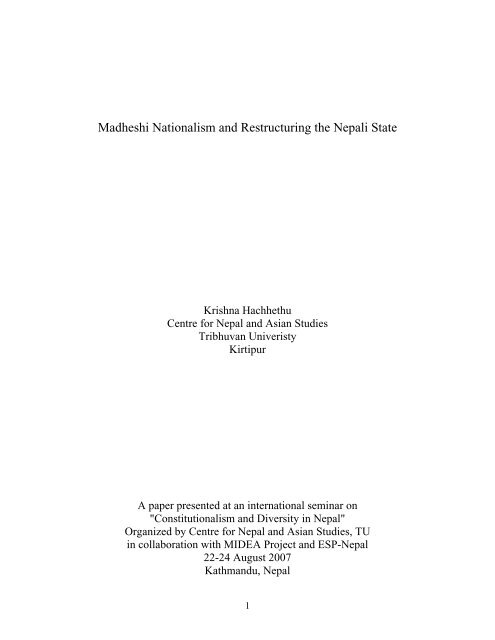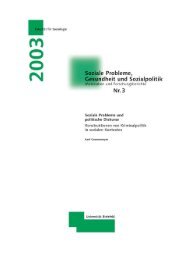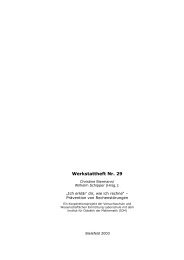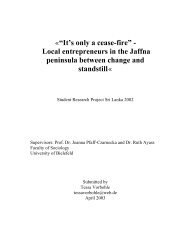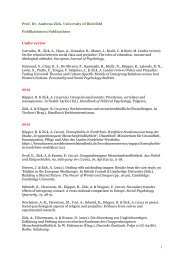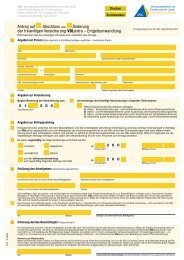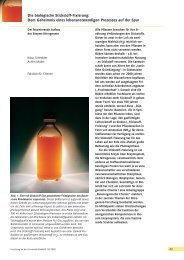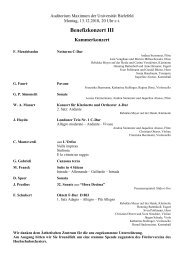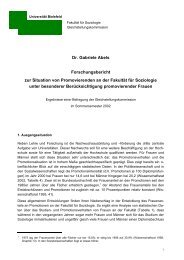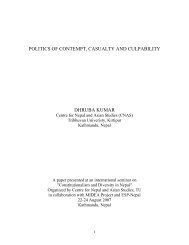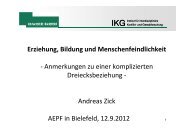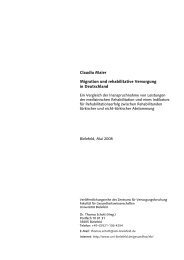Madheshi Nationalism and Restructuring the Nepali State
Madheshi Nationalism and Restructuring the Nepali State
Madheshi Nationalism and Restructuring the Nepali State
Create successful ePaper yourself
Turn your PDF publications into a flip-book with our unique Google optimized e-Paper software.
<strong>Madheshi</strong> <strong>Nationalism</strong> <strong>and</strong> <strong>Restructuring</strong> <strong>the</strong> <strong>Nepali</strong> <strong>State</strong><br />
Krishna Hachhethu<br />
Centre for Nepal <strong>and</strong> Asian Studies<br />
Tribhuvan Univeristy<br />
Kirtipur<br />
A paper presented at an international seminar on<br />
"Constitutionalism <strong>and</strong> Diversity in Nepal"<br />
Organized by Centre for Nepal <strong>and</strong> Asian Studies, TU<br />
in collaboration with MIDEA Project <strong>and</strong> ESP-Nepal<br />
22-24 August 2007<br />
Kathm<strong>and</strong>u, Nepal<br />
1
A preliminary draft<br />
<strong>Madheshi</strong> <strong>Nationalism</strong> <strong>and</strong> <strong>Restructuring</strong> <strong>the</strong> <strong>Nepali</strong> <strong>State</strong><br />
2<br />
Krishna Hachhethu<br />
This paper attempts to capture <strong>the</strong> rise of <strong>Madheshi</strong> nationalism both in historical context <strong>and</strong><br />
contemporary politics. The author’s direct <strong>and</strong> indirect observations at times (before, during <strong>and</strong><br />
after <strong>the</strong> recent Madhesh uprising of <strong>the</strong> January-February 2007) <strong>and</strong> <strong>the</strong> findings of a<br />
nationwide survey conducted recently in March-April 2007 are also used as resource materials.<br />
The January-February 2007 Madhesh uprising – a 21 day long mass movement participated in by<br />
large masses of <strong>the</strong> <strong>Madheshi</strong> population – was an unprecedented event parallel to Jan<strong>and</strong>olan II<br />
of <strong>the</strong> April 2006. It was a l<strong>and</strong>mark event in bringing out regional based ethno-nationalism as<br />
one of <strong>the</strong> prominent issues in <strong>the</strong> national discourse on restructuring <strong>the</strong> <strong>Nepali</strong> state. Before<br />
that, public debate on ethno-nationalism was Janjati-centric <strong>and</strong> social scientists belonging to<br />
Janjati – geographer Harka Gurung, sociologist Krishna Bahadur Bhattachan, political scientist<br />
Mahendra Lawati are some to mention here – are well known for <strong>the</strong>ir assertion of <strong>the</strong> Janajti<br />
identity <strong>and</strong> rights in <strong>the</strong>ir writings. Indeed, <strong>the</strong> issue got prominence due to academic responses<br />
from non-Janajati scholars, i.e. Dor Bahadur Bista, Prayag Raj Sharma, Dilli Ram Dahal etc.<br />
among <strong>the</strong> native scholars <strong>and</strong> also writings by foreign scholars, e.g. Lionel Caplan, David<br />
Gellner, William Fisher, Marie Lecomte-Tilouine, <strong>and</strong> many o<strong>the</strong>r anthropologists. There is a<br />
single, highly commendable, political study of Madhesh by Frederick Gaige. Preference of<br />
<strong>Madheshi</strong> scholars are art, culture, language, literature, pure science, math <strong>and</strong> o<strong>the</strong>r technical<br />
subjects (Dahal 2005: 20; Burkert 1997: 242) but not social sciences which has its own<br />
implications for putting <strong>the</strong> Madhesh behind o<strong>the</strong>r issues in public debate till <strong>the</strong> recent past.<br />
Unlike introduction of Janjati identity for which Janjati scholars play pioneering roles, <strong>the</strong><br />
Madhesh identity has been historically asserted by political activism <strong>and</strong> it gets a solid<br />
recognition as an impact of <strong>the</strong> recent Madhesh movement.<br />
As inclusive democracy is one of <strong>the</strong> three key contents of restructuring <strong>the</strong> <strong>Nepali</strong> state project –<br />
<strong>the</strong> o<strong>the</strong>r two being: persuasion for republic <strong>and</strong> transformation of <strong>the</strong> armed conflict against <strong>the</strong><br />
background of <strong>the</strong> Communist Party of Nepal (Maoist)’s insurgency (1996-2006) – registration<br />
of a group into excluded category has its own advantage, both materially <strong>and</strong> symbolically. The<br />
post-Jan<strong>and</strong>olan II transitional governance arrangements offered some benefits to Janjatis,<br />
women, <strong>and</strong> Dalits, but <strong>the</strong>y granted nothing in <strong>the</strong> case of <strong>the</strong> <strong>Madheshi</strong>s. Thus, <strong>the</strong> recent<br />
Madhesh explosion was a natural outcome of <strong>the</strong> <strong>Madheshi</strong>s’ resentment against <strong>the</strong> <strong>Nepali</strong> state<br />
for its long ignorance <strong>and</strong> negligence to <strong>the</strong>ir grievances. It was so powerful <strong>and</strong> effective that<br />
Girija Prasad Koirala, <strong>the</strong> Prime Minister of <strong>the</strong> eight-party coalition government including <strong>the</strong><br />
CPN (Maoist), was forced to proclaim twice within a single week that federalism would be<br />
instituted <strong>and</strong> that <strong>the</strong> number of constituencies in <strong>the</strong> Tarai would be increased. Accordingly <strong>the</strong><br />
Interim Constitution was amended twice within less than three months of its promulgation on 15<br />
January 2007. The Madhesh uprising, thus, has to its credit <strong>the</strong> achievement of federalism <strong>and</strong><br />
redistribution <strong>and</strong> increment of electoral constituencies in favour of Tarai, both being important<br />
<strong>and</strong> substantial steps towards more inclusive democracy. Vijaya Karna, a <strong>Madheshi</strong> activist,
praised this achievement: “It gives Madhesh a separate identity; it produces federalism; it<br />
compels <strong>the</strong> state to increase representation of <strong>the</strong> Madhesh in <strong>the</strong> state apparatus; it helps<br />
<strong>Madheshi</strong>s to get citizenship card without much pain; <strong>and</strong> above all it boosts up morale <strong>and</strong><br />
confidence of <strong>the</strong> <strong>Madheshi</strong> people.” 1 Below is an excerpt of a direct observation report from 16<br />
to 26 January 2007 on <strong>the</strong> Madhesh uprising in Janakpur city of Dhanusha district. 2<br />
Madhesh b<strong>and</strong>h (general strike) was called by <strong>the</strong> <strong>Madheshi</strong> Janadhikar Forum (MJF), backed<br />
by <strong>the</strong> Tarai Jantantrik Mukti Morcha (TJMM) of both factions (Goait <strong>and</strong> Jwala Singh) <strong>and</strong><br />
participated in by workers of <strong>the</strong> Nepal Sadbhavana Party (NSP). Most of <strong>the</strong> demonstrators<br />
were from <strong>the</strong> age group of 12-25 <strong>and</strong> <strong>the</strong> number of demonstrators increased almost double in<br />
every next day. Schools along with shops were closed; <strong>the</strong> movement of all forms of<br />
transportation was disallowed <strong>and</strong> those attempting to defy <strong>the</strong> ban were destroyed or burnt.<br />
Demonstrators carried out <strong>the</strong> sticks <strong>and</strong> organized masal (torch) rally every evening. Tyre<br />
burning took place at every corner of <strong>the</strong> city. Police deployed were mostly <strong>Madheshi</strong>s <strong>and</strong><br />
<strong>the</strong>ir actions sometimes went to <strong>the</strong> extent of firing but <strong>the</strong>y failed to control <strong>the</strong> situation.<br />
Instead, <strong>the</strong> protesters defied <strong>the</strong> curfew <strong>and</strong> burnt government offices, banks <strong>and</strong> some private<br />
properties. A copy of <strong>the</strong> Interim Constitution was burnt every day.<br />
The local leaders of each of <strong>the</strong> Seven Party Alliance (SPA) attempted to counter <strong>the</strong> protests<br />
by organizing sadbhav (harmony) rallies occasionally; but <strong>the</strong>se were not effective. Despite<br />
being <strong>Madheshi</strong>s, <strong>the</strong>y were blamed as <strong>the</strong> stooges of <strong>the</strong> ‘hill rulers’. They avoided appearing<br />
in public places whenever street protest occurred. When <strong>the</strong> local cadres of <strong>the</strong> CPN (Maoist)<br />
once countered some MJF cadres with physical violence, its office building was attacked <strong>the</strong><br />
next day by <strong>the</strong> protesters of a big rally. The local leaders of all <strong>the</strong> mainstream parties seemed<br />
to be in a dilemma. On <strong>the</strong> one h<strong>and</strong>, <strong>the</strong>y suspected <strong>the</strong> role of reactionary elements in making<br />
<strong>the</strong> movement violent <strong>and</strong> destructive; on <strong>the</strong> o<strong>the</strong>r h<strong>and</strong>, <strong>the</strong>y endorsed almost all <strong>the</strong> dem<strong>and</strong>s<br />
of <strong>the</strong> MJF. Consequently, <strong>the</strong>y nei<strong>the</strong>r resisted nor participated in <strong>the</strong> Madhesh movement.<br />
‘Pahadis out of Madhesh’ <strong>and</strong> ‘down with hill administration’ were <strong>the</strong> main slogans chanted<br />
in <strong>the</strong> rally. Some shops <strong>and</strong> a hotel run by Pahadi people were destroyed <strong>and</strong> burnt. None of<br />
<strong>the</strong> Pahadis were seen on <strong>the</strong> street (though <strong>the</strong>y constitute one-fifth of <strong>the</strong> Janakpur city<br />
population) throughout <strong>the</strong> days of Madhesh b<strong>and</strong>h. In a public speech organized at <strong>the</strong> end of<br />
<strong>the</strong> day – which was everyday programme – speakers stressed <strong>the</strong> following dem<strong>and</strong>s:<br />
abrogation of <strong>the</strong> Interim Constitution, declaration of federalism, census before <strong>the</strong> election of<br />
Constituent Assembly, delimitation of electoral constituencies on <strong>the</strong> basis of population,<br />
inclusion of <strong>Madheshi</strong>s in <strong>the</strong> state apparatus.<br />
The observation report exhibits multiplicity of <strong>the</strong> Madhesh movement. It is a clear sign of <strong>the</strong><br />
rise of <strong>the</strong> <strong>Madheshi</strong> nationalism associated with assertion for <strong>the</strong> <strong>Madheshi</strong> identity; it is<br />
temperamentally anti-hills so contributing to Pahadi-<strong>Madheshi</strong> tension; it is a manifestation of<br />
discontent against <strong>the</strong> systematic exclusion of <strong>the</strong> Madhesh by <strong>the</strong> state <strong>and</strong> also a quest for<br />
inclusion of <strong>the</strong> <strong>Madheshi</strong>s in many forms, by <strong>the</strong> establishment of federalism in particular. It is<br />
also a deterrence against <strong>the</strong> emerging trend of left dominance in national politics in general <strong>and</strong><br />
against <strong>the</strong> CPN (Maoist)’s aggressive campaign of party building in particular.<br />
1 He expressed <strong>the</strong>se views while giving his speech as a resource person on one-day discussion programme on<br />
“<strong>Restructuring</strong> <strong>the</strong> <strong>Nepali</strong> <strong>State</strong> <strong>and</strong> Madhesh“ on 19 April 2007, organized in Janakpur by <strong>State</strong> of Democracy<br />
in South Asia, Nepal Chapter.<br />
2 From an observation report prepared by Lal Babu Yadav, a researcher of a study team on “Interface Between<br />
<strong>State</strong> <strong>and</strong> Ethnicity“‚ headed by <strong>the</strong> author of this paper.<br />
3
Rise of <strong>the</strong> <strong>Madheshi</strong> <strong>Nationalism</strong><br />
Madhesh <strong>and</strong> <strong>Madheshi</strong> terms are contested simply because <strong>the</strong> administrative divisions of <strong>the</strong><br />
20 Tarai districts include a considerable portion of hill territory (32%) <strong>and</strong> <strong>the</strong> Pahadis (people of<br />
hill origin) constitute 36% in total population of <strong>the</strong> Tarai. Keshab Dhungel, <strong>the</strong> Vice President<br />
of <strong>the</strong> <strong>Nepali</strong> Congress (NC) Dhanusha District Committee, claimed “I am also <strong>Madheshi</strong>,<br />
speaking <strong>Nepali</strong> as mo<strong>the</strong>r tongue”. 3 This is a representative voice of most of <strong>the</strong> Pahadi (hillorigin)<br />
people residing in <strong>the</strong> Tarai since a long time ago. If <strong>the</strong> term Madhesh <strong>and</strong> <strong>Madheshi</strong><br />
separate from <strong>the</strong> administrative division of Tarai districts, <strong>the</strong>se terminologies could become<br />
somehow distinct, topographically <strong>and</strong> culturally. Madhesh is plain l<strong>and</strong>scape south from<br />
Siwalik hill range <strong>and</strong> <strong>the</strong> <strong>Madheshi</strong>s broadly encompass people of non-hill origin. Again, such<br />
ethnic <strong>and</strong> regional identity is contested as <strong>the</strong>re is no pan-Madhesh identity, culturally,<br />
religiously, or linguistically. The people of non-hill origin are divided into three distinct cultural<br />
groups: plains Hindu castes, plains Janjati groups, <strong>and</strong> Muslims. Plains Janjati group like Tharus<br />
do not consider <strong>the</strong>mselves as <strong>Madheshi</strong>s, except for some assimilated Tharus of <strong>the</strong> eastern<br />
Tarai (ICG 2007: 2). Cultural differences between <strong>the</strong> plains Janjatis <strong>and</strong> <strong>the</strong> plains caste groups<br />
are as large as those between <strong>the</strong> hill castes <strong>and</strong> <strong>the</strong> hill Janajati groups. Muslim identity is<br />
predominantly associated with a religious identity ra<strong>the</strong>r than a regional identity. Culturally<br />
speaking, Madhesh <strong>and</strong> <strong>Madheshi</strong> identity is specifically associated with <strong>the</strong> plains Hindu castes<br />
of Maithali- <strong>and</strong> Bhojpuri-speaking populations. Divergence among <strong>the</strong> non-hill origin people<br />
<strong>and</strong> distinction of one against ano<strong>the</strong>r group is fur<strong>the</strong>r evident from <strong>the</strong> fact that <strong>the</strong> recent<br />
Madhesh agitation was confined to <strong>the</strong> areas – from Morang in <strong>the</strong> east to Bara in <strong>the</strong> central<br />
Tarai – where plains Hindu castes speaking Maithali, Bhojpuri, <strong>and</strong> Bajika predominate. The<br />
epicentre was <strong>the</strong> Mithila belt of five districts – Saptari, Siraha, Dhanusha, Mahotari, <strong>and</strong> Sarlahi<br />
– where <strong>the</strong> proportion of Pahadis in <strong>the</strong> population varies from 7% in Saptari to 22% in Sarlahi.<br />
Leadership of all <strong>the</strong> Tarai-based regional parties <strong>and</strong> forces have come from <strong>the</strong> Maithalispeaking<br />
community.<br />
No doubt, <strong>the</strong> recent Madhesh movement has established <strong>Madheshi</strong> nationalism as a significant<br />
part of <strong>the</strong> emerging ethnic <strong>and</strong> political l<strong>and</strong>scape of Nepal. Its draws its force from <strong>the</strong> fact that<br />
Madhesh – south of Siwalik hills – is distinct from <strong>the</strong> middle hills of Nepal, ecologically,<br />
linguistically, <strong>and</strong> culturally. Their lifestyle, food habits, dress, language <strong>and</strong> culture are common<br />
with people who live across <strong>the</strong> Indian border in Utter Pradesh <strong>and</strong> Bihar (Gaige 1975: 12;<br />
Gellner et al. 1997: 240; Jha 1993). The cultural identity of <strong>the</strong> plains Hindu castes transcends<br />
national territories. The trans-national linkages along with <strong>the</strong> open border have contributed<br />
significantly to enhancing <strong>the</strong> capacity of <strong>the</strong> <strong>Madheshi</strong>s to fight against <strong>the</strong> hill-dominated state.<br />
This is less true of significant plains Janjatis, such as Tharus <strong>and</strong> Rajvamshis, who lack large<br />
bodies of fellow ethnic communities just over <strong>the</strong> border. Fur<strong>the</strong>rmore, Maithali people have a<br />
rich political, religious <strong>and</strong> artistic heritage <strong>and</strong> so <strong>the</strong>y have cultural superiority complex<br />
(Burkert 1997: 252). In contrast to <strong>the</strong> <strong>Nepali</strong>zation of Janjati groups in both hill <strong>and</strong> Tarai<br />
regions, <strong>the</strong> <strong>Madheshi</strong> castes have more effectively resisted cultural assimilation. For instance,<br />
<strong>the</strong> figure for Maithali-speakers is recorded consistently at 12 percent from <strong>the</strong> time of <strong>the</strong> first<br />
census in 1952 up to <strong>the</strong> 2001 census. The presence of Pahadi people in small numbers in <strong>the</strong><br />
five districts of <strong>the</strong> Mithila belt – 12% of <strong>the</strong> population with 15% of <strong>the</strong> territory being hilly –<br />
can be interpreted as fur<strong>the</strong>r evidence of <strong>the</strong> Maithils’ ability to resist penetration by Pahadis. Of<br />
3 Interview with Keshab Dhungel on 17.January 2007.<br />
4
<strong>the</strong> three key instruments of <strong>Nepali</strong>zation – monarchy, Hindu religion, <strong>and</strong> <strong>Nepali</strong> language – <strong>the</strong><br />
Madeshi caste people seem conformist with <strong>the</strong> first two instruments but <strong>the</strong>y have consistently<br />
resisted <strong>the</strong> imposition of <strong>the</strong> <strong>Nepali</strong> language <strong>and</strong> hill culture. Nepal democracy survey 2007<br />
reveals that majority of respondents belonging to <strong>Madheshi</strong> castes expressed a preference for <strong>the</strong><br />
retention of monarchy <strong>and</strong> Hindu state. 4 Never<strong>the</strong>less political forces emerging in Madhesh,<br />
including NSP, MJF <strong>and</strong> both factions of TJMM, have adopted a formal position for a republic<br />
<strong>and</strong> a secular state<br />
On language issues, an overwhelming majority of <strong>Madheshi</strong> people, regardless of caste,<br />
ethnicity, or religion, opted for <strong>the</strong> removing <strong>Nepali</strong>’s status as <strong>the</strong> sole official language. In this<br />
spirit, a <strong>Madheshi</strong> scholar has appealed for <strong>the</strong> word ‘Nepalese’ or ‘Nepalbasi’ to be used when<br />
addressing <strong>the</strong> citizens of Nepal because <strong>the</strong> official title ‘<strong>Nepali</strong>’ may be understood to refer<br />
only to those people who speak <strong>Nepali</strong> language as <strong>the</strong>ir mo<strong>the</strong>r tongue (Shah 2007: 1). The rise<br />
of <strong>Madheshi</strong> nationalism over time can also be seen in <strong>the</strong> fact that <strong>the</strong> proportion of people of<br />
<strong>Madheshi</strong> origin (across caste, ethnicity <strong>and</strong> religion) who preferred to identify <strong>the</strong>mselves with<br />
ethnic/regional identity, ra<strong>the</strong>r than with national identity, increased from 19 % in 2004 to 46 %<br />
in 2007. The <strong>Madheshi</strong>’s preference to identify <strong>the</strong>mselves with national identity decreased from<br />
40 % to 18 % over <strong>the</strong> last three years. 5 This same trend was not evident among Pahadis. What<br />
would be implication of <strong>the</strong> rise of ethno-regionalism for <strong>the</strong> national integration of <strong>the</strong> country?<br />
The result of Nepal democracy survey 2007 gives little comfort to secessionists, however an<br />
overwhelming majority of <strong>the</strong> surveyed respondents (more than 90%), including <strong>Madheshi</strong>s to<br />
<strong>the</strong> same extent, said that <strong>the</strong>y were ‘proud’ to belong to <strong>the</strong>ir community <strong>and</strong> also ‘proud’ to be<br />
<strong>Nepali</strong>.<br />
<strong>Madheshi</strong>-Pahadi tension<br />
The Madhesh activism of any form – whe<strong>the</strong>r peaceful movement or armed insurrection – is<br />
temperamentally anti-hill. Is it directed principally at <strong>the</strong> hill-dominated state system or is it<br />
motivated purely by a desire to provoke a communal clash? This is a contested issue. The Chure-<br />
Bhabar Ekta Samaj – a forum of Pahadis people residing to <strong>the</strong> north of <strong>the</strong> Siwalik hills which<br />
appeared in response to <strong>the</strong> Madhesh uprising – claimed that 24 Pahadis were murdered during<br />
<strong>and</strong> after <strong>the</strong> January-February 2007 Madhesh movement. 6 This excludes <strong>the</strong> killing of 27 Maoist<br />
cadres – all Pahadis – in a clash between <strong>the</strong> MJF <strong>and</strong> <strong>the</strong> CPN (Maoist) in Gaur, Rautahat, on 21<br />
March 2007. The TJMM <strong>and</strong> several o<strong>the</strong>r small splinter armed <strong>Madheshi</strong> groups have continued<br />
anti-Pahadi actions in different forms: kidnapping, extortion, killings etc. The TJMM (Jwala<br />
Singh)’s threats against Pahadis staffing <strong>the</strong> administration in Madhesh have had <strong>the</strong> effect of<br />
reducing <strong>the</strong> presence of <strong>the</strong> state in <strong>the</strong> Madhesh.<br />
As stated above, ‘Pahadis out of Madhesh’ (pahadi chor, desh chod) was <strong>the</strong> central slogan of<br />
<strong>the</strong> Madhesh movement. The absence of Pahadis from <strong>the</strong> streets of Janakpur during <strong>the</strong> days of<br />
Madhesh upheavals clearly shows <strong>the</strong> apprehensions of Pahadis residing in Madhesh. A group of<br />
4 Nepal Democracy Survey 2007 was conducted in March-April 2007 in 162 sample polling stations of <strong>the</strong> 41<br />
sample parliamentary constituencies. A structure questionnaire was administered through face to face interview<br />
with a nation wide sample of 4,089 respondents.<br />
5 Ibid; Krishna Hachhethu, <strong>State</strong> of Democracy in Nepal: Survey Report. Kathm<strong>and</strong>u: <strong>State</strong> of Democracy in<br />
South Asia/Nepal Chapter <strong>and</strong> International IDEA, 2004.<br />
6 Rajdhani daily, 7 August 2007.<br />
5
ten Pahadi people arrived in Janakpur on 23 January 2007 to carry out a project related to family<br />
planning <strong>and</strong> stayed at <strong>the</strong> Pahadi-owned Rama Hotel. That evening a group of 50-60 <strong>Madheshi</strong>s<br />
v<strong>and</strong>alised <strong>the</strong> hotel but <strong>the</strong> Pahadi guests managed to escape attack by leaving <strong>the</strong>ir rooms <strong>and</strong><br />
claiming to be hotel staff. The next day <strong>the</strong>y shifted to <strong>the</strong> <strong>Madheshi</strong>-owned Manaki Hotel.<br />
However, <strong>the</strong>y were so terrified <strong>the</strong>y decided to return to Kathm<strong>and</strong>u <strong>the</strong> same day without doing<br />
any of <strong>the</strong> work for which <strong>the</strong>y had come to Janakpur. They left for <strong>the</strong> airport under police<br />
protection. 7 The fear psyche remains <strong>the</strong>re even after withdrawal of <strong>the</strong> movement by <strong>the</strong> MJF. A<br />
local Pahadi woman working in an NGO in Dhanusha district said that about 88 houses in<br />
Janakput city owned by Pahadis were sold at knock-down prices in <strong>the</strong> aftermath of <strong>the</strong> January-<br />
February 2007 Madhesh unrest. 8<br />
Despite incidents such as <strong>the</strong>se, <strong>the</strong> leadership of <strong>the</strong> Madhesh movement, <strong>the</strong> MJF in particular,<br />
is cautious not to aggravate <strong>the</strong> situation to <strong>the</strong> extent of all-out communal violence. They<br />
certainly gave a communal flavour for <strong>the</strong> purpose of mass mobilization but did not intend to<br />
aggravate <strong>the</strong> agitation in <strong>the</strong> form of clash between Pahadis <strong>and</strong> <strong>Madheshi</strong>s. The Kathm<strong>and</strong>ubased<br />
<strong>Madheshi</strong> elites who have stake in <strong>the</strong> capital of <strong>the</strong> country are aware of its backlash if <strong>the</strong><br />
<strong>Madheshi</strong> agitation leads to a communal violence. Their intellectual contribution to <strong>the</strong><br />
<strong>Madheshi</strong> movement would have also a role for not advancing <strong>the</strong> agitation beyond <strong>the</strong> point of<br />
no return. One of <strong>the</strong> major factors preventing a communal clash is resilience shown by Pahadis.<br />
The longst<strong>and</strong>ing state bias against <strong>Madheshi</strong>s may be one of <strong>the</strong> factors behind <strong>the</strong> loss of <strong>the</strong><br />
lives of 29 <strong>Madheshi</strong>s during <strong>the</strong> January-February 2007 unrest. O<strong>the</strong>rwise, scattered events<br />
creating psychological terror <strong>and</strong> physical violence in <strong>the</strong> Madhesh were evidence that attacks<br />
were one-sided <strong>and</strong> <strong>the</strong> Pahadis did not retaliate, aside from <strong>the</strong> formation of <strong>the</strong> Chure-Bhabar<br />
Ekta Samaj for <strong>the</strong> protection of <strong>the</strong> Pahadis in <strong>the</strong> Madhesh. They called b<strong>and</strong>hs <strong>and</strong> negotiated<br />
with <strong>the</strong> state, but never attacked individual <strong>Madheshi</strong>s. Credit goes to <strong>the</strong> media as well for not<br />
giving communal flavour to <strong>the</strong> Madhesh uprising.<br />
The Madhesh’s anti-hill sentiment is manifesting in different forms. Resentment against hill<br />
domination in both national <strong>and</strong> regional politics is on <strong>the</strong> rise. The recent Madhesh uprising is<br />
also interpreted “as a political struggle for formal political influence for <strong>the</strong> traditional Terai<br />
leaders, presumingly on behalf of <strong>the</strong> Madhesi population“ (Hatlebakk 2007: 20). For <strong>the</strong> 20<br />
Tarai districts, from 1991, 88 parliamentary seats were allocated amounting to 43% of <strong>the</strong> total<br />
205 members of <strong>the</strong> House of Representatives. In <strong>the</strong> last three parliamentary elections held in<br />
1991, 1994 <strong>and</strong> 1999, <strong>the</strong> <strong>Madheshi</strong> MPs were 18-20%, suggesting <strong>the</strong>ir low political edge in<br />
comparison to <strong>the</strong> Pahadis in political representation from <strong>the</strong> Tarai. Even from <strong>the</strong> Mithila belt<br />
of five districts – a hinterl<strong>and</strong> of Madhesh – <strong>the</strong> Pahadis’ representation in <strong>the</strong> last three<br />
parliaments was 21-29 percent of total 24-25 seats allocated for this belt. Resentment of<br />
enlightened <strong>Madheshi</strong>s against such pattern is well expressed by Professor Ramavatar Yadav: “I,<br />
as being a <strong>Madheshi</strong> of Dhanusha district, feel discomfort that some one with surname like<br />
Subedi, Giri, Malla, Koirala <strong>and</strong> Dhungana (all Pahadis) represented me <strong>and</strong> my district in<br />
parliament”(2006:4).<br />
Deterrence against <strong>the</strong> CPN (Maoist)<br />
7 Op.cit.2<br />
8 Interview with Mrs. A, 21 April 2007.<br />
6
The Madhesh uprising has a component of deterrence against <strong>the</strong> rising influence of <strong>the</strong> CPN<br />
(Maoist). The first victim of <strong>the</strong> Madhesh unrest was Ramesh Kumar Mahato, a MJF cadre, who<br />
was shot by <strong>the</strong> CPN (Maoist) activists. This event just led to add <strong>and</strong> sharpen anti-Maoist<br />
component of <strong>the</strong> Madhesh movement. As <strong>the</strong>re had already been several incidents of bloody<br />
encounters between <strong>the</strong> activists of <strong>the</strong> <strong>Madheshi</strong> groups – TJMM <strong>and</strong> MJF – <strong>and</strong> <strong>the</strong> CPN<br />
(Maoist) since before <strong>the</strong> call of <strong>the</strong> Madhesh <strong>and</strong>olan from 16 Janaury 2007. The CPN (Maoist)<br />
<strong>and</strong> o<strong>the</strong>r political parties suspected <strong>the</strong> h<strong>and</strong> or reactionary elements <strong>and</strong> Hindu fundamentalists<br />
of India. The CPN (Maoist) supremo, Prach<strong>and</strong>a, publicly called to deal it with coercive<br />
measures which fur<strong>the</strong>r fuelled anti-Maoists sentiment of <strong>the</strong> Madhesh agitators. The Gaur<br />
incident of Rautahat district was <strong>the</strong> climax <strong>and</strong> <strong>the</strong> final show of confrontation between <strong>the</strong> MJF<br />
<strong>and</strong> <strong>the</strong> CPN (M) in which 27 Maoists were killed.<br />
The leadership of <strong>the</strong> recent Madhesh movement were all Maoists at one point. Splitting from <strong>the</strong><br />
CPN (Maoist), <strong>the</strong>y have confronted <strong>the</strong>ir one-time Maoist colleagues <strong>and</strong> also competed with<br />
political parties to capture support within Madhesh. During <strong>the</strong> Madhesh unrest, some leaders of<br />
<strong>the</strong> mainstream parties were victimized, but relatively less so when compared to <strong>the</strong> suffering of<br />
<strong>the</strong> Maoist activists. In retrospect, <strong>the</strong>re would appear to be some irony in <strong>the</strong> fact that <strong>the</strong> CPN<br />
(Maoist) provided <strong>the</strong> basis for <strong>the</strong> rise of militant <strong>Madheshi</strong> nationalism – which was in<br />
conformity to its strategy of ethnicization of <strong>the</strong>ir insurgency – but this later turned <strong>and</strong> backfired<br />
in a spectacular way. With <strong>the</strong> slogan – ‘say it with pride, we are <strong>Madheshi</strong>’ – <strong>the</strong> CPN<br />
(Maoist)’s front organization Madhesh National Liberation Front (MNLF) – formed in 2000 –<br />
was actively mobilized in <strong>the</strong> Madhesh during <strong>the</strong> time of insurgency. Most of <strong>the</strong> dem<strong>and</strong>s<br />
raised by <strong>the</strong> MJF <strong>and</strong> o<strong>the</strong>r <strong>Madheshi</strong> groups – i.e. inclusion, federalism with right to self<br />
determination, language <strong>and</strong> culture rights, reservation etc. – have already been raised by <strong>the</strong><br />
MNLF. Replacement of <strong>the</strong> MNLF founder leader Jai Krishna Goait by Matrika Prasad Yadav as<br />
leadership of <strong>the</strong> front in July 2004 led to a split with <strong>the</strong> formation of TJMM by dissidents. The<br />
dissidents, hence, confronted with <strong>the</strong> Maoist cadres <strong>and</strong> <strong>the</strong>y actively campaigned that <strong>the</strong> CPN<br />
(Maoist)’s pro-<strong>Madheshi</strong> posture was fake. This position was accepted by several o<strong>the</strong>r small<br />
Madhesh armed groups including a splinter group of <strong>the</strong> TJMM (Jwala Singh) <strong>and</strong> <strong>the</strong> MJF.<br />
Nepal Democracy Survey 2007 revealed <strong>the</strong> <strong>Madheshi</strong>s’ anti-Maoist posture: <strong>the</strong> majority of<br />
respondents belonging to <strong>the</strong> <strong>Madheshi</strong> castes <strong>and</strong> Muslim ‘distrusted’ <strong>the</strong> CPN (Maoist) nor did<br />
<strong>the</strong>y believe in <strong>the</strong> CPN (Maoist)’s recent commitment to multiparty system. By contrast, <strong>the</strong><br />
majority of <strong>the</strong> hill respondents showed trust in <strong>the</strong> Maoists’ commitments. 9<br />
The local <strong>Madheshi</strong> leaders of <strong>the</strong> NC, UML <strong>and</strong> o<strong>the</strong>r parties gave up <strong>the</strong> idea of countering <strong>the</strong><br />
Madhesh unrest when it became clear that it was turning into an anti-Maoist agitation. The call<br />
for sadbhav rallies – which was effective in Nepalgunj against communal violence happened just<br />
before <strong>the</strong> starting of Madhesh <strong>and</strong>olan from 16 January 2007 – appeared ritualistic. It was a<br />
tactical resistance against <strong>the</strong> CPN (Maoist). The flags of established parties failed to deter <strong>the</strong><br />
CPN (Maoist)’s long aggressive campaigns launched by its People Liberation Army (PLA)<br />
during <strong>the</strong> insurgency period <strong>and</strong> by <strong>the</strong> Young Communist League (YCL) in <strong>the</strong> post-<br />
Jan<strong>and</strong>olan II time. Whereas <strong>the</strong> militant Madhesh uprising proved an effective counter to <strong>the</strong><br />
CPN (Maoist). To quote from <strong>the</strong> ICG report, “For <strong>the</strong> Maoists, <strong>the</strong> Tarai violence was a wake<br />
9 Party-wise disaggregated data of <strong>the</strong> same survey <strong>and</strong> a subsequent elite survey show that <strong>the</strong> majority of parties’<br />
sympathizers <strong>and</strong> majority members of <strong>the</strong> present interim parliament ‘distrusted’ <strong>the</strong> CPN (Maoist).<br />
7
up call: much of it was directed against <strong>the</strong>ir cadres, whose appearance of domination was<br />
shattered” (2007:1).<br />
Awareness against Hill Migration<br />
The presence of hill origin people in Madhesh in substantial number, 36% of <strong>the</strong> total population<br />
of 20 Tarai districts, is a factor that contributes to <strong>Madheshi</strong> nationalism. Politicization of<br />
demography has been used for two contrasted purposes. The Tarai as home of nearly half of <strong>the</strong><br />
total population of <strong>the</strong> country – for which <strong>the</strong> Pahadis contribute one-third numerically – has<br />
been used for bargaining purpose in favour of <strong>the</strong> Madhesh <strong>and</strong> <strong>the</strong> <strong>Madheshi</strong>s. At <strong>the</strong> same time,<br />
migration from <strong>the</strong> hills has been propagated as <strong>the</strong> state’s concerted plan to assimilate <strong>the</strong><br />
<strong>Madheshi</strong>s into <strong>the</strong> fold of hill culture <strong>and</strong> to establish hill political dominance in <strong>the</strong> Tarai.<br />
Certainly <strong>the</strong> <strong>Nepali</strong> state encouraged migration from south of <strong>the</strong> border in <strong>the</strong> past <strong>and</strong> from<br />
hill to <strong>the</strong> Madhesh since <strong>the</strong> 1950s which served <strong>the</strong> interest of small hill elites. L<strong>and</strong> <strong>and</strong> forest<br />
are <strong>the</strong> two major resources of <strong>the</strong> Madhesh that have been distributed disproportionately in<br />
favour of <strong>the</strong> hill people. One cannot deny <strong>the</strong> fact that hill migration was used as one of <strong>the</strong><br />
instrument for homogeneous model of <strong>Nepali</strong>zation which has adverse impact in <strong>the</strong> Madhesh so<br />
far its cultural uniqueness, economic interest <strong>and</strong> political power structure are concerned. Four<br />
major factors – end of malaria, l<strong>and</strong> reform act of 1964, launching of several resettlement<br />
projects in <strong>the</strong> Madhesh, <strong>and</strong> construction of <strong>the</strong> East-West highway – led to flow of hill dwellers<br />
into <strong>the</strong> Madhesh.<br />
However, it is oversimplistic to lump everything in one basket as <strong>the</strong>re are many causes behind<br />
<strong>the</strong> changing demography of <strong>the</strong> Tarai. Thee major points here:<br />
1. In <strong>the</strong> Tarai, <strong>the</strong> Pahadi population increased substantially from 6% in 1952/54 to 36% in<br />
2001. The <strong>Madheshi</strong> activists overlook one of <strong>the</strong> reasons why this happened. In <strong>the</strong> past<br />
when Nepal was divided into 32 districts, all Tarai districts were geographically confined<br />
to plains areas south of <strong>the</strong> Siwalik range. When internal territory was restructured into<br />
75 districts in 1963, hill areas north of <strong>the</strong> Siwaliks was included in <strong>the</strong> Tarai, which<br />
accounts 32% of total l<strong>and</strong> of 20 Tarai districts. “All <strong>the</strong> Tarai districts have varying<br />
proportion of Siwalik <strong>and</strong> mid-mountain areas, <strong>the</strong> highest being 77.5% in Nawalparasi<br />
district, 51.5% in Chitwan district, 50.8% in Banke district <strong>and</strong> 41 % in Kailali district to<br />
<strong>the</strong> lowest 8.9% in Sunsari district <strong>and</strong> about 7% in Jhapa district, <strong>the</strong> average being<br />
32.4% for <strong>the</strong> 20 districts” (Shah 2006: 2). It is not only because of migration but mixing<br />
of plain-hill l<strong>and</strong>s into <strong>the</strong> boundary of Tarai districts that cause <strong>the</strong> presence of hill<br />
origin people in substantial number in <strong>the</strong> Tarai districts. If areas north of <strong>the</strong> Siwalik are<br />
taken away from <strong>the</strong> Tarai district in <strong>the</strong> federal project in making, <strong>the</strong> number of Pahadis<br />
in Madhesh would reduce substantially which contributes to rejuvenate cultural territory<br />
of Madhesh.<br />
2. Pahadis constitute <strong>the</strong> majority in seven Tarai districts (Jhapa, Morang, Chitwan,<br />
Nawalparasi, Dang, Kailali, <strong>and</strong> Kanchanpur) <strong>and</strong> most of <strong>the</strong>se are traditionally <strong>the</strong><br />
homel<strong>and</strong> of <strong>the</strong> plains Janajatis, not of plains caste groups. The case of Nawalparasi is<br />
different as its territory has a 77.5% hill l<strong>and</strong>scape which explains why Pahadis are <strong>the</strong><br />
majority in that district. The major victims of <strong>the</strong> flow of hill migration are <strong>the</strong> plain<br />
Janajatis.<br />
8
3. In <strong>the</strong> rest of <strong>the</strong>Tarai belt (from Saptari in <strong>the</strong> east to Kapilbastu in <strong>the</strong> west) known as<br />
homel<strong>and</strong> of Mithali- <strong>and</strong> Bhojpuri-speaking <strong>Madheshi</strong> castes – hill migrants are<br />
numerically insignificant. Settlements of Pahadis in <strong>the</strong>se districts are concentrated along<br />
<strong>the</strong> East-West highway.<br />
Discontent against systematic exclusion<br />
The recent Madhesh movement is an outburst of anger against systematic exclusion of Madhesh<br />
since long ago. The Anglo-Nepal war of 1814-16 – in which at least some <strong>Madheshi</strong>s took <strong>the</strong><br />
side of British India (Goait 2007: 3) – was <strong>the</strong> starting point of <strong>the</strong> existing discrimination<br />
against Madhesh. The prohibition on <strong>Madheshi</strong>s in <strong>the</strong> security forces was its legacy. <strong>Madheshi</strong>s<br />
had to obtain a written permission to enter <strong>the</strong> Kathm<strong>and</strong>u Valley during <strong>the</strong> Rana regime (1846-<br />
1950). Only in <strong>the</strong> post-1950 period did <strong>the</strong> <strong>Nepali</strong> state actively <strong>and</strong> aggressively launch several<br />
programms to integrate <strong>the</strong> Tarai, culturally, economically <strong>and</strong> administratively. The state<br />
designed scheme of national integration <strong>and</strong> acculturation through <strong>the</strong> imposition of <strong>Nepali</strong><br />
language (as <strong>the</strong> only official language <strong>and</strong> medium of education) <strong>and</strong> hill culture adversely<br />
impacted to <strong>the</strong> <strong>Madheshi</strong>s. The Citizenship Act of 1963 is biased against non-<strong>Nepali</strong> speaking<br />
population <strong>and</strong> consequently many <strong>Nepali</strong> citizens of <strong>the</strong> plains origin were ei<strong>the</strong>r deprived from<br />
citizenship certificate or <strong>the</strong>y faced much difficulty in process of acquiring citizenship cards.<br />
The advent of democracy in 1990 <strong>and</strong> its reinstatement in 2006 with a new vigour of inclusive<br />
democracy failed to feed ethnic <strong>and</strong> regional aspirations of <strong>the</strong> <strong>Madheshi</strong> people. On one single<br />
issue – citizenship issue – <strong>the</strong> post-1990 government took some initiatives – formed a<br />
commission to study <strong>the</strong> problem of citizenship distribution in Madhesh; distributed citizenship<br />
cards to 34,900 <strong>Madheshi</strong>s in 1997; <strong>and</strong> passed <strong>the</strong> Citizenship Act 1999. But <strong>the</strong> Supreme Court<br />
foiled <strong>the</strong>se steps by declaring latter unconstitutional. This is humiliating to <strong>the</strong> <strong>Madheshi</strong>s <strong>and</strong><br />
for which <strong>the</strong> UML’s ambivalence policy <strong>and</strong> <strong>the</strong> palace’s obstructionist role were responsible.<br />
The extreme politicization of <strong>the</strong> citizenship issue has exacerbated <strong>the</strong> problem. Distribution of<br />
citizenship certificates across <strong>the</strong> country in January-April 2007 through door to door visits<br />
recorded <strong>the</strong> number of its distribution, 1.5 million in Tarai <strong>and</strong> 1.02 million in <strong>the</strong> hills. 10 This<br />
may have revealed an earlier exaggeration of <strong>the</strong> citizenship problem for political gain since a<br />
government commission formed in 1994 reported that 3.5 million people residing in <strong>the</strong> Tarai<br />
had been deprived of citizenship certificates.<br />
The post-1990 period witnessed <strong>the</strong> rise of ethnicity <strong>and</strong> regionalism. The constitutional<br />
provision of ‘right to protect <strong>and</strong> promote own language <strong>and</strong> culture’ was experimented with<br />
introducing mo<strong>the</strong>r tongue, Maithali as official language in District Development Committee of<br />
Saptari <strong>and</strong> Newari in Kathm<strong>and</strong>u municipality. But <strong>the</strong> Supreme Count voided this decision.<br />
Discrimination against Madhesh was distinct in many o<strong>the</strong>r cases. For instance, to <strong>the</strong><br />
satisfaction of some excluded groups, <strong>the</strong> government formed Dalit Commission, Women<br />
Commission <strong>and</strong> Foundation for Indigenous Nationalist in <strong>the</strong> post-1990 period, but none of<br />
similar inducement to <strong>the</strong> <strong>Madheshi</strong>s. The Madhesis were not listed when <strong>the</strong> governments of<br />
both <strong>the</strong> pre- <strong>and</strong> <strong>the</strong> post-Jan<strong>and</strong>olan II initiated for reservation policy to <strong>the</strong> excluded groups.<br />
Moreover, <strong>the</strong> Deuba government, with consent of all major political parties, took a decision, in<br />
2002, overriding <strong>the</strong> constitutional provision of delimitating parliamentary constituencies on <strong>the</strong><br />
basis of population in aftermath of <strong>the</strong> national census. The population of Tarai increased from<br />
10 The Rising Nepal, 18 April 2007.<br />
9
43% in 1991 to 48% in 2001 which, according to <strong>the</strong> 1990 constitution, required an increment of<br />
parliamentary constituencies in <strong>the</strong> Tarai. The decision not to follow this constitutional provision<br />
for <strong>the</strong> next 25 years was a clear discrimination against <strong>the</strong> Madhesh.<br />
The accumulative effect of <strong>the</strong> state’s long discrimination has placed <strong>the</strong> <strong>Madheshi</strong>s in<br />
disadvantaged position. <strong>Madheshi</strong>s constitute one third of <strong>the</strong> total population of Nepal but <strong>the</strong>ir<br />
share in <strong>the</strong> power structure is much lower than this, i.e. 11.2% in integrated index of<br />
governance, 17.4% in parliament, <strong>and</strong> 96.3% (100 national) in integrated human development<br />
index. The figure of integrated human development index excludes data of <strong>the</strong> plains Janjatis,<br />
Muslims, <strong>and</strong> Dalits – <strong>the</strong> most marginalized groups among non-hill origin people residing in <strong>the</strong><br />
Madhesh.<br />
Assertion for Inclusion<br />
The cry against exclusion obviously means a quest for inclusion. Historically, <strong>the</strong> <strong>Madheshi</strong><br />
activism for inclusion has been advanced passing through four stages. The <strong>Nepali</strong> Tarai<br />
Congress, formed in 1951 under <strong>the</strong> leadership of Bedan<strong>and</strong>a Jha, introduced <strong>the</strong> Madhesh<br />
activism. It set three key agendas: autonomous Tarai region, recognition of Hindi as national<br />
language, <strong>and</strong> inclusion of <strong>Madheshi</strong>s in <strong>the</strong> civil service. This party failed to get people’s<br />
endorsement in electoral politics as it lost all seats in <strong>the</strong> 1959 parliamentary elections. After its<br />
leader Jha was co-opted in <strong>the</strong> Panchayat politics, <strong>the</strong> first stage of Madhesh activism was<br />
disappeared. Only since <strong>the</strong> mid-‘80s, <strong>the</strong> <strong>Madheshi</strong> identity politics has been revived under <strong>the</strong><br />
banner of Nepal Sadbhavana Parisad – which later turned into NSP after <strong>the</strong> restoration of<br />
multiparty system in 1990 – led by Gajendra Narayan Singh. It has upheld <strong>the</strong> key agendas set by<br />
<strong>the</strong> <strong>Nepali</strong> Tarai Congress <strong>and</strong> added some new contents, i.e. federalism, reservation, <strong>and</strong><br />
distribution of citizenship card to <strong>the</strong> <strong>Madheshi</strong>s. The NSP partly succeeded to get electoral<br />
endorsement on its policy platforms as it gained 3-6 seats in <strong>the</strong> last three general elections held<br />
from 1991 to 1999. The NSP’s contribution is confined to a revival <strong>and</strong> sustainability of <strong>the</strong><br />
Madhesh based identity politics. The escalation of <strong>the</strong> Maoist insurgency in <strong>the</strong> Madhesh since<br />
2000 imputed to raise a militant <strong>Madheshi</strong> nationalism. But its ethno-regional content was<br />
overshadowed by a larger picture of its image as a communist insurgent. The CPN (Maoist)’s<br />
unique contribution to <strong>the</strong> Madhesh activism is that it stressed more on <strong>the</strong> issues related to<br />
socio-economic change which have had a greater appeal to <strong>the</strong> downtrodden strata of <strong>the</strong><br />
Madhesh society, Dalits. The entry of <strong>the</strong> MJF in <strong>the</strong> Madhesh activism has helped to enlarge <strong>the</strong><br />
canvas of <strong>the</strong> <strong>Madheshi</strong> nationalism <strong>and</strong> raising <strong>the</strong> militant <strong>Madheshi</strong> activism.<br />
Part of reason that explains limitation of <strong>the</strong> <strong>Madheshi</strong> activism in <strong>the</strong> past <strong>and</strong> its expansion at<br />
present is leadership. In <strong>the</strong> past, leadership was dominated by high caste <strong>Madheshi</strong>s (Brahmin,<br />
Bhumihar, Kayastha <strong>and</strong> Rajput) who constitute less than 3 % of <strong>the</strong> total population of <strong>the</strong><br />
<strong>Madheshi</strong>s. The rigid hierarchy <strong>and</strong> stratification of Hindu caste societies of <strong>the</strong> Madhesh limits<br />
<strong>the</strong> capacity of leadership from <strong>the</strong> forward group so far as mobilization of <strong>the</strong> people is<br />
concerned. Now <strong>the</strong> leadership of <strong>the</strong> Madhesh activism has come from <strong>the</strong> Yadavs, Shahs, <strong>and</strong><br />
similar castes group, which are numerically <strong>the</strong> most important. To say it in o<strong>the</strong>r words,<br />
politicization of Madhesh nationalism has advanced from an elite business with leadership of <strong>the</strong><br />
forward group to a mass consciousness with leadership of <strong>the</strong> backward group. The MJF upholds<br />
all <strong>the</strong> major issues put forth by <strong>the</strong> early risers of <strong>the</strong> <strong>Madheshi</strong> activism, but its st<strong>and</strong>s on<br />
10
federalism, on increment of <strong>the</strong> <strong>Madheshi</strong>s’ say in national politics, <strong>and</strong> on inclusion of <strong>the</strong><br />
<strong>Madheshi</strong>s in <strong>the</strong> state apparatus, <strong>and</strong> on affirmative actions are more sharp <strong>and</strong> powerful.<br />
Federalism<br />
Most dem<strong>and</strong>s of <strong>the</strong> <strong>Madheshi</strong> movement revolve around its central thrust, federalism.<br />
Federalism <strong>and</strong> its form are contested at multiple levels. Nepal democracy survey 2007 reveals a<br />
clear division that majority respondents of hill origin favoured retention of unitary system<br />
whereas <strong>the</strong> majority respondents belonging to plains castes <strong>and</strong> Muslims preferred a federal<br />
system. Never<strong>the</strong>less <strong>the</strong> interim coalition government had already proclaimed that <strong>Nepali</strong> state<br />
would be restructured into <strong>the</strong> federal form by a new constitution to be framed after <strong>the</strong> election<br />
of Constituent Assembly. There is no unanimity among <strong>the</strong> forces championing for federalism on<br />
its form. The NSP has already proposed a region-based federalism dividing <strong>the</strong> Tarai into two<br />
parts, East Tarai <strong>and</strong> West Tarai. The CPN (Maoist) also proposed two Tarais – Madhesh <strong>and</strong><br />
Tharuwan –but <strong>the</strong> criteria it suggested is a combination of ethnicity <strong>and</strong> region. The MJF’s<br />
dem<strong>and</strong> is to make <strong>the</strong> Tarai a single unit, <strong>the</strong> Madhesh province.<br />
Debate of making Madhesh as a single or many units in <strong>the</strong> proposed scheme of federalism lies<br />
on setting <strong>the</strong> principle of forming federal units – homogeneous or heterogeneous. If<br />
heterogeneity as criteria for constituting federal units is taken as a model, <strong>the</strong> present vertical<br />
division of <strong>the</strong> country – five development regions, fourteen zones <strong>and</strong> 75 districts – is perfect to<br />
remould <strong>the</strong> existing territories into federal structure. There are only 12 districts where a<br />
particular caste/ethnic group constitutes a majority community (Chhetri in 7, Gurung in 2 <strong>and</strong><br />
each of Tamang, Tharu <strong>and</strong> Newar in 1 district) in total population of <strong>the</strong> respective districts. In<br />
this scheme, <strong>the</strong> Madhesh will become a single federal unit of diverse population, plains castes,<br />
Pahadis, plains Janjatis <strong>and</strong> Muslims. The political purpose of discontent against one Madhesh<br />
by <strong>the</strong> Tharus is understood that it will not serve <strong>the</strong>ir interests. Since <strong>the</strong> plains castes constitute<br />
a majority of 59% (28% plain Janjati <strong>and</strong> 13% Muslim) among <strong>the</strong> non-hill origin people of <strong>the</strong><br />
20 Tarai districts, it will be change of <strong>the</strong>ir master only, from hill high castes to plains high<br />
castes, if <strong>the</strong> idea of ‘one Madhesh one Pradesh’ is structured.<br />
Federalism is in essence a remedy of <strong>and</strong> respect to diversity. Constituting of homogeneous<br />
federal units helps to reduce communal tension <strong>and</strong> clash. Avoidance of <strong>the</strong> possibility of<br />
communal violence in <strong>the</strong> future should be taken as one of <strong>the</strong> prime considerations while<br />
restructuring <strong>the</strong> <strong>Nepali</strong> state into <strong>the</strong> federal units. For <strong>the</strong> creation of homogeneous federal<br />
units, <strong>the</strong> boundary of <strong>the</strong> present vertical divisions of <strong>the</strong> country into five development regions,<br />
14 zones <strong>and</strong> 75 districts should be deleted first. This means, in <strong>the</strong> context of Tarai, taking out<br />
<strong>the</strong> l<strong>and</strong>scape of <strong>the</strong> north of Siwalik from Madhesh which in turns help to rejuvenate cultural<br />
territories of <strong>the</strong> diverse plains origin groups of <strong>the</strong> Tarai. Making <strong>the</strong> surrounding areas of <strong>the</strong><br />
East-West high way as a separate unit under <strong>the</strong> union government fur<strong>the</strong>r contributes to <strong>the</strong><br />
proposal of making cultural territories of many federal units. Taking into consideration of<br />
diversity of <strong>the</strong> Madhesh in terms of culture, language <strong>and</strong> religion, making one Madhesh many<br />
Pradeshs is sensible while constructing federal units.<br />
The Madhesh, in <strong>the</strong> context of <strong>the</strong> rise of regional based ethno-nationalism, is going to be<br />
different from <strong>the</strong> past. Increment of <strong>the</strong> <strong>Madheshi</strong>s’ share in national politics through an<br />
electoral system which ensures proportional representation based on <strong>the</strong> strength of population<br />
11
<strong>and</strong> <strong>the</strong>ir domination in regional power structure through a federal system are <strong>the</strong> critical issues.<br />
In principal <strong>the</strong> <strong>Nepali</strong> state, though reluctantly, met <strong>the</strong>se dem<strong>and</strong>s. Now <strong>the</strong> tension is how to<br />
translate <strong>the</strong>se dem<strong>and</strong>s/promises into political structure. It is certainly a complex task that<br />
entails dealing with multiple tensions, between a hill-dominated state <strong>and</strong> emerging <strong>Madheshi</strong><br />
political forces/parties, between <strong>Madheshi</strong>s <strong>and</strong> Pahadis, between plains castes <strong>and</strong> plains<br />
Janjatis, between forward <strong>and</strong> backward groups among <strong>the</strong> <strong>Madheshi</strong> castes, <strong>and</strong> between those<br />
who profess peaceful means <strong>and</strong> o<strong>the</strong>rs who have taken up arms. Due to <strong>the</strong> imminence of <strong>the</strong><br />
constituent assembly elections, it would be sensible to negotiate all outst<strong>and</strong>ing disputed issues at<br />
<strong>the</strong> time of framing <strong>the</strong> new constitution.<br />
References<br />
Burkert, Claire. 1997. “Defining Maithali Identity: Who is in Charge?”. In David N. Gellner et al<br />
(eds.), <strong>Nationalism</strong> <strong>and</strong> Ethnicity in a Hindu Kingdom: The Politics of Culture in<br />
Contemporary Nepal. Amsterdam: Harwood Academic Publishers, pp. 241-274.<br />
Dahal,Dilli Ram. 2005. “Democracy <strong>and</strong> Regionalism: Perspectives from <strong>the</strong> <strong>Nepali</strong> Tarai”.<br />
<strong>Nepali</strong> Journal of Contemporary Studies, l.4:1, pp. 11.27.<br />
Gaige, Frederick H. 1975. Regionalism <strong>and</strong> National Unity in Nepal. Delhi: Vikas Publishing<br />
House.<br />
Goait, J.K. 2007. “History of Tarai in Nepal”. In http:/medhesi.wordpress.com. (4 April 2007).<br />
Hachhethu, Krishna. 2004. <strong>State</strong> of Democracy in Nepal: Survey Report. Kathm<strong>and</strong>u: SDSA/N<br />
<strong>and</strong> International IDEA.<br />
Hatlebakk, Magnus. 2007. “Economic <strong>and</strong> social structure that may explain <strong>the</strong> recent conflicts<br />
in <strong>the</strong> Terai of Nepal”. (Unpublished paper)<br />
ICG. 2007. Nepal’s Troubled Tarai Region. International Crisis Group.<br />
Jha, Hari Bansha. 1993. The Terai Community <strong>and</strong> National Integration in Nepal. Kathm<strong>and</strong>u:<br />
Centre for Economics <strong>and</strong> Technical Studies.<br />
Shah, Shree Govinda. 2006. “Social Inculsion of <strong>Madheshi</strong> Community in Nation Building”<br />
(unpublished).<br />
--- --- --- 2007. “Peaceful Resolution of Ethnopolitical Movement in Nepal Madhesh”. In<br />
www.nepalnews.com. (23 April 2007).<br />
Yadav, Ramaabatar. 2006. “<strong>Madheshi</strong> Hunda” (Being <strong>Madheshi</strong>). In Basanta Thapa <strong>and</strong> Mohan<br />
Mainali (eds.). Madhesh: Samsya ra Sambhabana (Madhesh: Problems <strong>and</strong> Opportunity).<br />
Kathm<strong>and</strong>u: Social Science Baha.<br />
12


